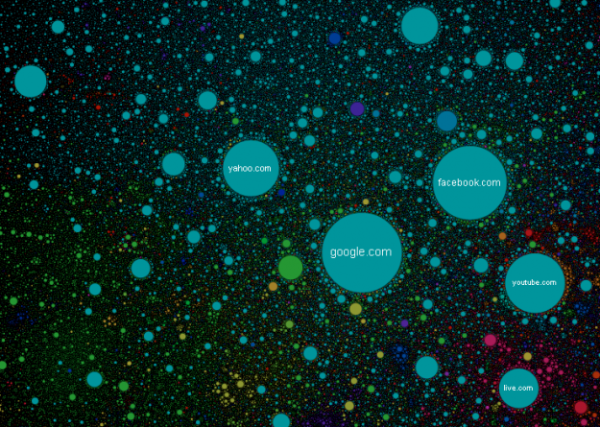The web has literally exploded ever since it was first invented. Today, the web as we know contains hundreds of thousands of such websites which are very popular and are thronged by internet users. Now, a rather ambitious project called ‘The Internet Map’ has visually represented the relationship between 350,000 websites.
The visual representation of ‘The Internet Map’ is quite interesting. Think it like there’s a galaxy with hundreds of thousands of planets. These planets are then clustered together according to their likeness. That is precisely how websites are represented in this project.
In total, 350,000 websites from 190 countries comprising of all the domain zones which were there at the end of 2011 are represented on this map. To show which websites are popular and attract more traffic, the circles representing them is sized accordingly. The greater the traffic, the larger is the circle.
The space between two circles, or websites, is also measured. It shows the frequency with which a user clicks through from one website to another. Thus if a lot of users jump from site A to site B, the distance between the two is quite small on the map.
This project is by no means a small effort. It required complex and detailed engineering and mathematical resources to pull it off. Much like Google Maps, you are able to navigate through the huge cluster of websites by zooming in and out and grabbing the screen to pull sideways.
It is indeed a remarkable effort which goes on to show how inter-connected the web is. Revealing the true purpose of this project, the description on the website reveals, “The Internet map is an attempt to look into the hidden structure of the network, fathom its colossal scale, and examine that which is impossible to understand from the bare figures of statistics.”
Source: The Internet Map
[ttjad keyword=”best-selling-gadget”]




